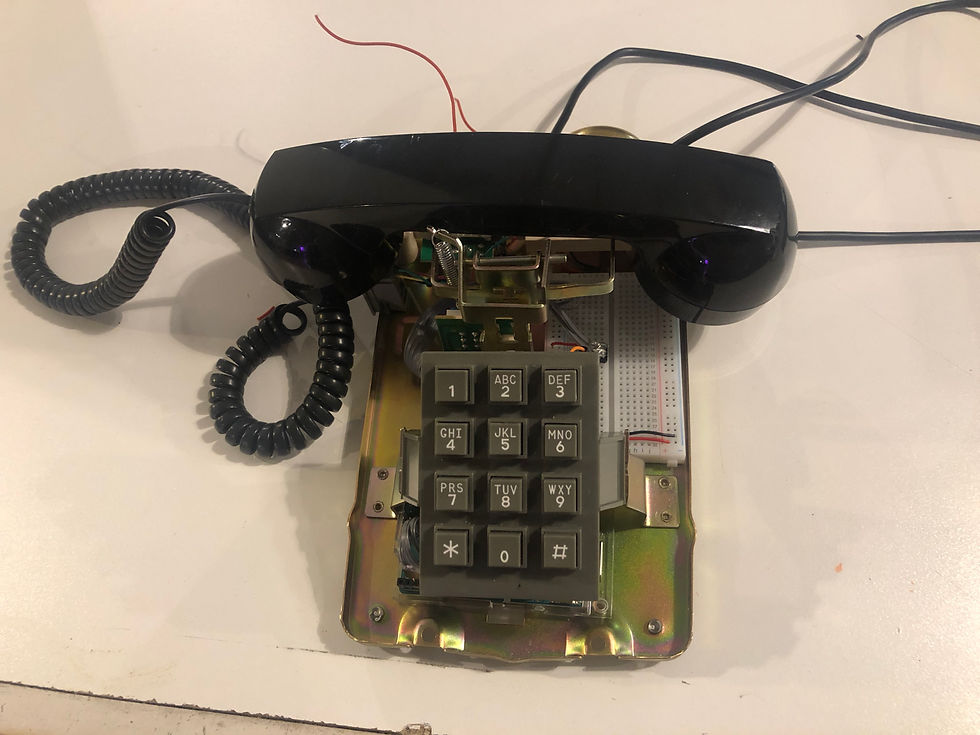ICM Week 6: seeing the future, serial asynchronous communication (pt. 1)
- Gabriella Garcia

- Oct 16, 2018
- 4 min read
I felt sort of doomed going into this topic while barely grasping the each of the parts colliding toward each other (P5 colliding with HTML/CSS, colliding into C/Arduino ); I compounded the doom by purchasing an ADXL345 accelerometer, which is somehow muuuuch different than the other ADXL3## models used for the labs. Maybe it's not that much different, but I'm not fluent enough to know yet.
Lab 1: Intro to Asynchronous Serial Communications (or a long first step at least)
Anyway, I bought the ADXL345 for the lab homework, and it was a journey into a new-sensor-learning abyss. Unlike the 335, the 345 doesn't clearly label the X,Y,Z axises and instead uses acronyms I know absolutely nothing about. Besides GND and 3V3 at least. Datasheets are still pretty blurry to me, but I started there anyway alongside a hookup tutorial (datasheet incl.) on Sparkfun, which required a lot of external meandering as I tried to cross-reference for definitions. I looked up some model comparisons to see what the correlating hookups might be, if any, and in this time found out that they are respectively analog (335, red on left) and digital (345, blue on right), which is probably where I should have stopped realizing that this wouldn't correlate with the lab assignment.
But I didn't. It also uses I2c (Inter-integrated Circuit Protocol) or SPI (Serial Peripheral Interface), which are asynchronous and synchronous serial interfaces respectively, and I spiraled into research to figure out how to make it work for the lab. Suffice to say, I spent a lot of what I thought would be my allotted PComp time for the week figuring this out (it's a large budget from the outset), I made it work, but now I have to go back and figure out what it all means. I ended up getting it to work using a hookup and code walkthrough by Live Fast Code Young just to get the job done for the lab (they use I2C, so at least I know I'm in the asynchronous zone), which I'm still not exactly sure will work. I'm going to Yeseul for office hours to see if she can point me through the structure of the language.
It's not much. Sade is playing in the background. But also I sort of found a murky idea of how it all connects even though I don't really have the language at all, and in that I see the light. There were hours of fails here (including not soldering the accelerometer pins at first, believing I could nudge the chip tightly enough to maintain a connection... honestly I hate to think of how many hours I may have lost for ignoring advice. Lesson learned. Proud of my soldering job though..!). I also want to understand how the datasheet relays the information needed for the code and wiring.. I don't understand why SDA and SCL pins (going to A4 & A5 respectively) needed pull-up resistors for instance, or why the SDO pin also had to go to ground while the CS pin had to be connected to power.
I obviously need to know how this all actually works in order to start feeling out how to use the sensor for my own projects. I also can't help but ask, do we need to know how it works if we can just work with what it does? But seeing the readings on the monitor and feeling how things are measured certainly helped me zero in on the possible a little bit more. Here are links beyond the syllabus that assisted:
What to do when you just don't know:: Arduino, ADXL345 triple axis accelerometer and an RGB LED (actually the morale-boosting here may be better than the hookup tutorial itself)
Two I plan to go back to now that I have a little bit more of an idea:
Thoughts on Sketching User Experiences: The Workbook
I want to do more skimming of the Buxton's Sketching User Experiences: Getting the Design Right (the theoretical text behind the practical workbook) as I do find anecdotes helpful for understanding use of material. The workbook is really handy though, and I'm excited to sit down with some of the exercises as I gain momentum toward creating my own projects.
The idea of getting into the habit of sketching multiple times a day is really useful, one of those things that seems obvious once you read it but doesn't necessarily come naturally to a poet/journalist/performance artist. While there's plenty of written conceptualization/judgement-free brainstorming/pitch ideation/free movement/etc. involved in my practice, sketching, drawing, and even doodling are not naturally-occurring to me. I do however initially come from a theater background (Playwrights Horizons for three semesters before I left for Gallatin), and we were required to draw self-portraits in addition to other studies in composition/emotion/still-life through drawing, and I'm beginning to remember how informative that practice was for all of my other practices, even if I didn't draw for them.
It's really helpful to think of sketching as something that doesn't have to exist only within the realm of moving toward making something, but more as a sort of ideation scrapbooking and "I like that" mood boarding. I've been so constricted with figuring out the technical that it's been hard to ideate in the new mediums I'm learning, so sketching & collecting from general non-goal-oriented inspiration is a freeing concept.
(Pt. 2 with lab attempts to come, posting this now though so I have something to share in case I don't finish the labs in time to document before class.)











Comments